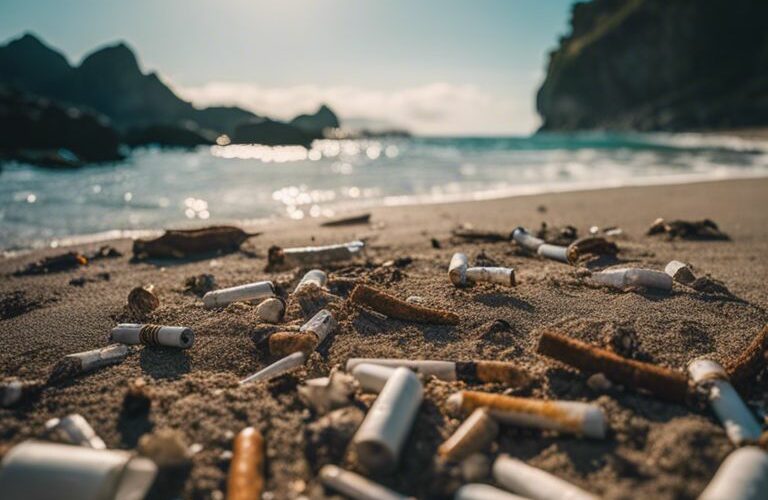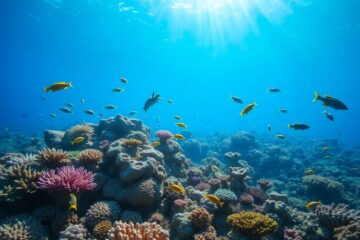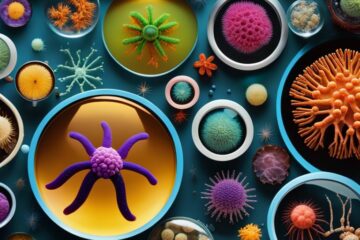Ecological degradation is a paramount concern, and one often overlooked but highly detrimental factor is the impact of cigarette butt litter on beach and sea environments. The pervasive presence of cigarette butts on shorelines poses severe threats to marine life and ecosystems, and also creates significant financial burdens for coastal communities. In this blog post, we will explore the hidden costs of cigarette butts and their detrimental effects on our beach and sea environments. We will also discuss potential solutions and actions that can be taken to mitigate this alarming issue.
Table of Contents
Understanding the Composition of Cigarette Butts
The impact of cigarette butts on the environment is a growing concern, especially in beach and sea environments. To truly understand and address this issue, it’s important to delve into the composition of cigarette butts – what they are made of and how they break down over time.
Materials and Chemicals in Cigarette Filters
Cigarette filters, also known as butts, are primarily composed of cellulose acetate, a type of plastic that can take up to 10 years to decompose. In addition to the plastic component, filters also contain various harmful chemicals and toxins such as nicotine, arsenic, cadmium, and lead.
For instance, a cigarette butt may seem insignificant in terms of size, but it can take many years to break down due to its composition of non-biodegradable materials. As it degrades, these harmful chemicals are released into the environment, posing a threat to marine life and polluting the surrounding ecosystem.
The Impact on Beach Environments
If there is one place where the impact of cigarette butt litter is unmistakable, it is on our beaches. Every year, millions of cigarette butts are irresponsibly discarded on beaches around the world, causing significant harm to these delicate ecosystems. The presence of cigarette butts not only poses physical and aesthetic challenges but also has detrimental effects on marine life.
Physical Pollution and Aesthetic Degradation
Physical pollution from discarded cigarette butts is a major concern for beach environments. Cigarette filters are made of a type of plastic called cellulose acetate, which can take years to break down. As a result, these filters accumulate on beaches, contributing to the overall plastic pollution crisis. Additionally, the unsightly presence of cigarette butts has a significant aesthetic impact, diminishing the natural beauty of beaches and deterring visitors from enjoying these precious coastal areas.
Effects on Marine Life
On top of the physical pollution and aesthetic degradation, the impact of cigarette butts extends to marine life. When cigarette butts are washed into the ocean, they release toxic chemicals and microplastics, posing a direct threat to marine organisms. These toxins can contaminate the water and harm aquatic life, while marine animals such as seabirds, turtles, and fish often mistake cigarette butts for food, leading to ingestion and potential health issues.
Plus, the leaching of harmful chemicals from cigarette butts can disrupt the balance of marine ecosystems, affecting everything from algae to apex predators. This highlights the far-reaching and interconnected nature of the harm caused by cigarette butt pollution in beach and sea environments.
The Impact on Sea Environments
Despite being small in size, cigarette butts have a significant negative impact on sea environments. The toxins leaching from these discarded butts can contaminate the water, threatening the delicate balance of marine ecosystems.
Toxic Chemical Leachate and Water Quality
With over 4000 chemicals present in cigarette butts, including nicotine, cadmium, and lead, these toxic substances can leach into the water, affecting the water quality and posing a threat to marine life. As the cigarette butts break down, the chemicals are released, causing harm to the sea environment and its inhabitants. This leachate has the potential to disrupt the pH levels of the water, impacting the survival of aquatic organisms and disturbing the natural balance of the ecosystem.
Chain Bioaccumulation and the Food Chain
Chain Any marine animals that ingest these toxic chemicals may experience bioaccumulation, where the toxins accumulate in their tissues over time. As smaller organisms absorb the contaminants from the cigarette butts, they are then consumed by larger predators, causing the toxins to move up the food chain. This bioaccumulation can have serious implications for the health of marine life and may ultimately impact human consumers of seafood.
Mitigating the Impact
After recognizing the severe impact of cigarette butts on beach and sea environments, it has become crucial to implement effective strategies to mitigate their negative effects. By taking proactive measures, we can work towards preserving these delicate ecosystems for future generations.
Policy and Regulation Initiatives
An essential aspect of mitigating the impact of cigarette butts on beach and sea environments is the implementation of stringent policies and regulations. These initiatives can include the enforcement of fines for littering, the introduction of extended producer responsibility for cigarette manufacturers, and the incorporation of environmental education in school curriculums. Additionally, governments and environmental agencies can collaborate to establish designated smoking areas with proper receptacles to prevent indiscriminate disposal of cigarette butts.
Community Engagement and Cleanup Efforts
One effective way to address the issue of cigarette butt pollution is through community engagement and cleanup efforts. Local organizations, environmental groups, and concerned citizens can come together to organize beach cleanups and awareness campaigns. These initiatives not only help in the physical removal of cigarette butts from beaches but also raise awareness about the impact of littering on marine life and ecosystems. Engaging the community in these efforts fosters a sense of stewardship and responsibility towards the preservation of our natural habitats.
Policy and regulation initiatives should go hand in hand with community engagement and cleanup efforts to create a comprehensive approach to tackle the issue of cigarette butt pollution. Through collective action and continued advocacy, we can strive to bring about positive change and protect the beauty and biodiversity of our coastal environments.
Summing up
With this in mind, it is evident that the hidden cost of cigarette butts is significantly impacting beach and sea environments. The detrimental effects on marine life, water quality, and overall ecosystem health highlight the urgent need for action to address this issue. It is crucial for individuals, communities, and policymakers to prioritize proper disposal and implement strategies to reduce cigarette butt litter. By raising awareness and promoting responsible behavior, we can work towards safeguarding our beaches and oceans from the negative consequences of cigarette butt pollution.
FAQ
Q: What are cigarette butts and how do they negatively impact beach and sea environments?
A: Cigarette butts are small, toxic waste products from smoked cigarettes that negatively impact beach and sea environments by leaching harmful chemicals and plastic particles into the water, harming marine life, and polluting the beaches.
Q: Are cigarette butts really a major problem for beach and sea environments?
A: Yes, cigarette butts are the most commonly littered item worldwide and a significant source of marine debris, causing serious environmental and ecological damage to our beaches and sea life.
Q: How long does it take for a cigarette butt to decompose in the ocean?
A: Cigarette butts are not biodegradable and can take up to 10-12 years to decompose in the ocean. During this time, they release toxins and microplastics into the water, posing a threat to marine organisms.
Q: What are the toxic chemicals present in cigarette butts, and how do they harm marine life?
A: Cigarette butts contain harmful chemicals such as nicotine, heavy metals, and plastic-derived toxins. These chemicals can leach into the water, poisoning marine animals and disrupting marine ecosystems.
Q: How can individuals help reduce the negative impacts of cigarette butts on beach and sea environments?
A: Individuals can help by properly disposing of cigarette butts in designated containers, participating in beach clean-up efforts, spreading awareness about the environmental impact of cigarette butt litter, and supporting policies that aim to reduce tobacco waste pollution.

Our contributing author is a passionate advocate for eco-friendly living and sustainability. With a background in eco-life, they are dedicated to inspiring and empowering individuals to adopt environmentally conscious lifestyles. Through insightful articles, they share practical tips, innovative solutions, and thought-provoking perspectives to promote a greener, more sustainable world. Join them on the journey towards eco-smart living and discover how small choices can make a big impact. 🌱









